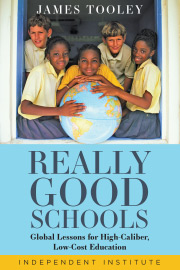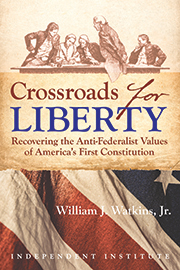Freeing the Retirees: How to Make Health Insurance Easier to Purchase
In two recent posts I have discussed ideas for freeing the doctor and freeing the employee from the traps of our current healthcare system. In this post I turn to freeing the retirees. For more details, please consult my book, Priceless: Curing the Healthcare Crisis (The Independent Institute, 2012).
There are 78 million baby boomers, and a very large number of them have retirement on their minds. If the past is a guide, more than 80 percent of them will retire before they become eligible for Medicare (at age 65). Although about one-third of US workers have a promise of postretirement healthcare from an employer, almost none of these promises are funded, and as in the case of the automobile companies, they may not be completely honored.
As a result, millions of retirees will find themselves buying their own insurance in the individual market. There they will face some unpleasant realities, which for many of them may come as a shock:
- Whereas employers typically pay about 75 percent of the premium at work, these retirees will have to pay 100 percent of the premium out of their own pockets.
- Whereas the share of premium paid by employees tends to be the same—regardless of age—individual insurance premiums for, say, a 60 year old are often five or six times higher than for a 20 year old.
- Whereas employers are forced to accept employees into their health plans and charge the same premiums regardless of health status, people in the individual market typically face medical underwriting. They may be charged higher premiums because of a health condition; they may face exclusions or be denied coverage altogether. If they are forced into a risk pool, they may face waiting periods as well as higher premiums.
In general, tax law, labor law, and employee benefits law favor the active employee and discriminate against the retiree. For example, here are three public policy barriers that will stand between early retirees and affordable health insurance:
- Employers cannot make premium contributions to the individually owned insurance of their retirees with untaxed dollars.
- Retirees must pay their premiums with after-tax dollars.
- There is no easy way for employers and employees to save (tax-free) for future medical expenses—including postretirement expenses.
Employer promises of postretirement healthcare are usually an all-or-nothing proposition. That is, employers can keep their retirees in their group insurance plan—paying expenses with pre-tax dollars—or they can do nothing. It’s hard to be in between. If an employer cannot afford, say, $12,000 for family coverage for a retiree, the employer cannot split the difference and contribute $6,000 to the employee’s individually owned insurance. Such a contribution would be treated as taxable income.
The obvious solutions to these problems are: (1) allow employers to make contributions (say, to a retiree’s Health Savings Account); (2) allow retirees to pay their share of premiums with pre-tax dollars; and (3) allow active employees and their employers to save tax-free—knowing that they will face the problem of postretirement care.[1]
——————
[1] Pamela Villarreal and Devon M. Herrick, “Health Care Costs During Retirement,” National Center for Policy Analysis, Brief Analysis No. 660, May 2009.
[Cross-posted on Psychology Today]













